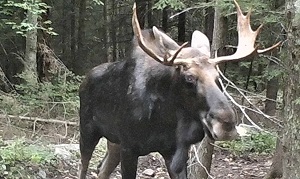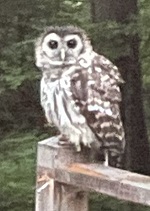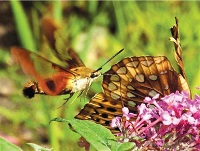|
They live in our midst again now, these
elephants of the northern forest, homely,
theatrical, and not quite elegant but at
least majestic.
And like no other creature in the forest,
they own it.
But oh, the antlers, and the drama of
their presence, seemingly unafraid with
dull eyes in a place where no predator
would challenge a healthy 1,600 pound
adult.
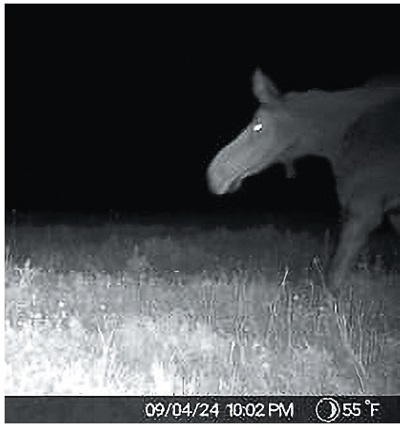
At least two moose, a cow and a bull, from the webcam at Joshua’s Farm, Dodd Road.
Photos courtesy of Brigitte Ruthman.
Moose once ranged throughout Massachusetts
but not where summers burn
hotter farther south.
They thrive on tree buds, aquatic vegetation,
grass, and leaves. Their voracious
appetite of 50 pounds of that stuff a
day leave diminutive deer suffering in
competition.
Their long stoic faces began reappearing
in the 1980s as browse returned to
overgrown fields and logging sites. They
remain elusive, enduring summer heat
by living in and around the area's many
swampy areas where they rarely cross
paths with humans.
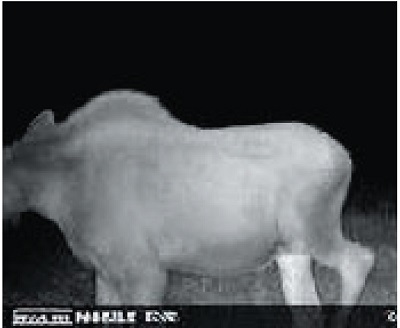
They've made a comeback and established
a breeding population, even
as climate change threatens further
inhospitable warming, winter ticks
overwhelm some calves, and dense,
unmanaged forests offer little food.
The young bull that crossed the south
side of the farm last week had velvet
peeling from his antlers that was not
his bel – that flap of skin beneath
his throat. Mating season when they
roam begins in September and ends in
October, much earlier than the November
season for bucks.
What's most amazing is how a ninefoot
long cow that passed through the
pasture 400 yards away on the north
side and within two hours of the bull
somehow managed to jump my four and
a half-foot wire fence. Or maybe she just stepped
over it. After all, the fence was planned to contain
dairy cows and allow for deer and other wildlife
to enter. Who could have imagined that maybe a
moose could fly?
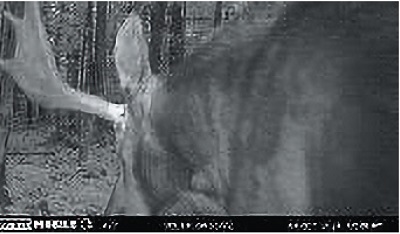
| 